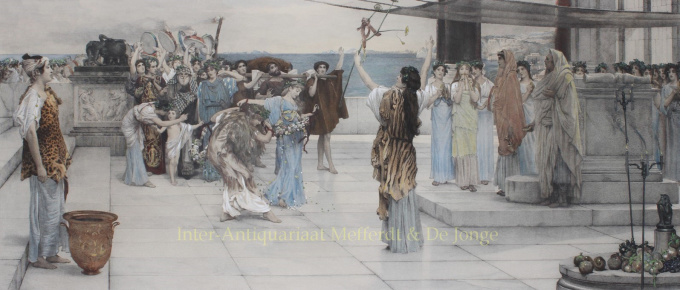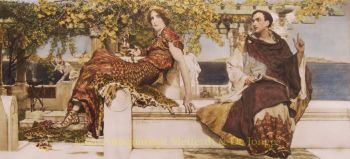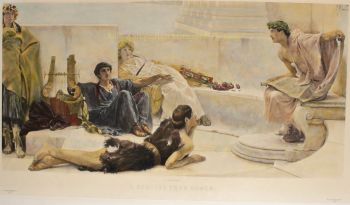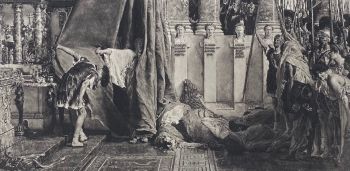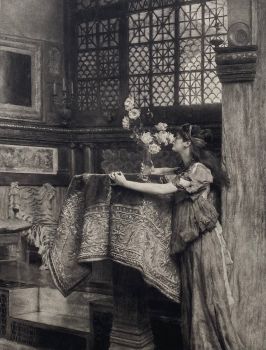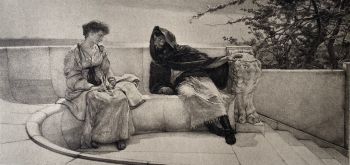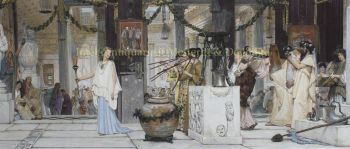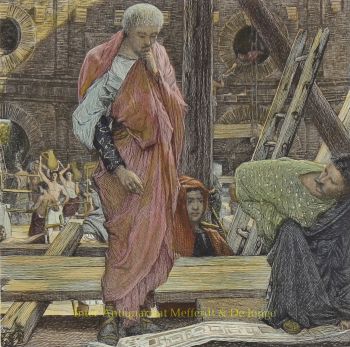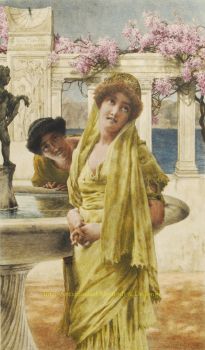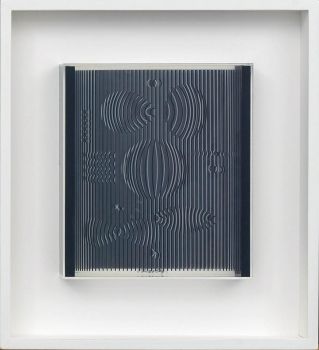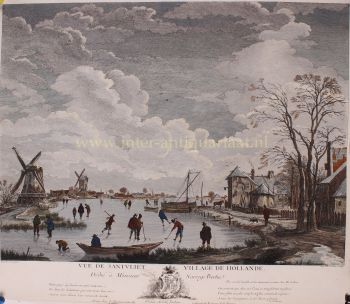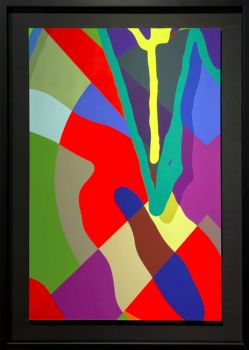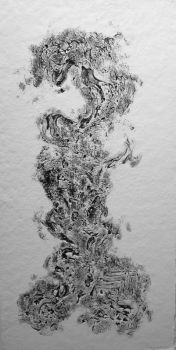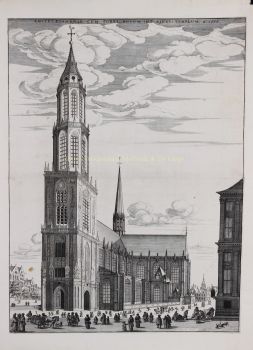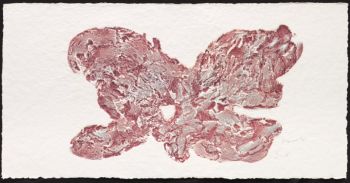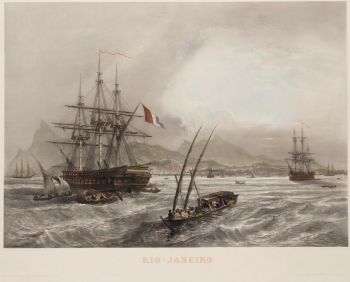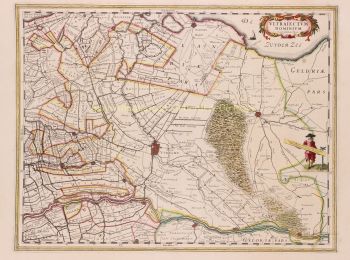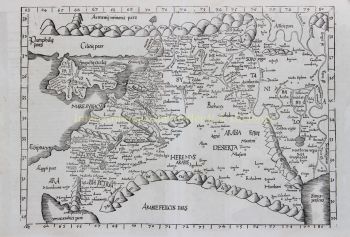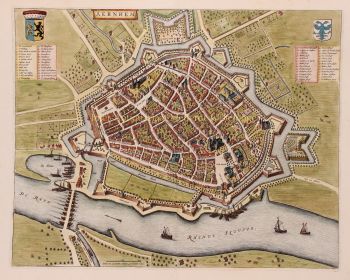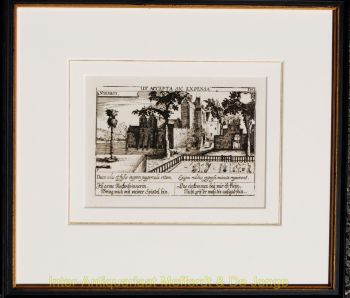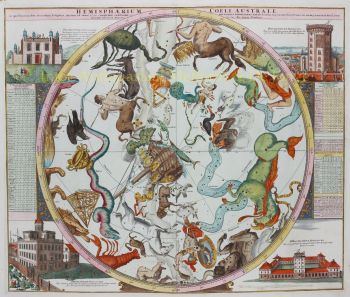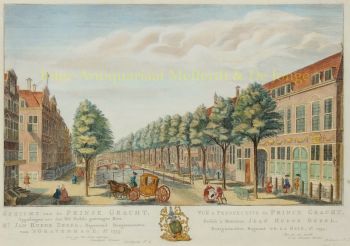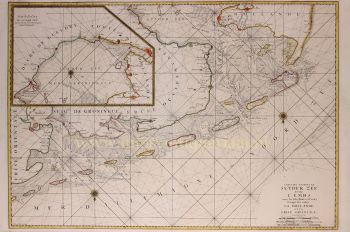Dedication to Bacchus 1892
Lawrence Alma-Tadema
€ 3.150
Inter-Antiquariaat Mefferdt & De Jonge
- About the artwork
DEDICATION TO BACCHUS Steel engraving by Auguste Blanchard after a painting by Sir Lawrence Alma-Tadema. Published in London in 1892. Coloured by hand at the time. Measures 49 x 94 cm. London's Lefèvre Gallery devoted a special exhibition to the painting (after which this engraving was made), commissioned for the collection of banker Baron von Schröder. The subject of the work is a child in the cult of Bacchus. Sunlight shines through the purple canopy and casts a shadow on the solemn figures of veiled priest and priestess who await the child before a marble altar. Next to them, a group of musicians play their instruments. To the left of the altar, the child waits with a crowd of worshippers, including four men with a large wine sack as an offering to the gods. A bacchante dressed in a leopard skin stands by a silver goblet, which is used for mixing sacred wine with water. This is a copy of a famous piece from the so-called Hildesheim Treasure, discovered in 1868, of which Alma-Tadema owned a replica and which is depicted in many of his paintings. Another bacchante, in a tiger skin, is waving a branch decorated with flowers, a bell and a ribbon. This is believed to be a variant of the traditional thyrsus (also called 'Bacchus staff'). The two dancing Bacchae are approaching the altar where they will hang the garland in the traditional manner. One difference between the painting and the engraving (which were made three years apart) is that the wreath on the engraving is made of flowers that have lost leaves, while on the painting the wreath only has green leaves. Another remarkable difference: on the engraving at the temple on the right, there is no frieze depicting centaurs (known for their unquenchable libido), nor is there a bronze statue of a centaur in front of the temple. The artist may have wanted to limit references to the orgies in Livius' account of the Bacchanalian scandal in 186 BC. This dedication scene is characterised more by religiousness than Bacchanalian fervour. Price: Euro 3,150 (incl. frame)
- About the artist
Lawrence Alma-Tadema is one of the most highly renowned romantic artists of late 19th century Britain. He was born in the Netherlands as Laurens Tadema, to the family of the town notary. Later, as he tried to make his niche in the art world, he changed the spelling of his first name to the more English “Lawrence,” and included his middle name “Alma” as part of his surname, so he would be listed among the “A’s” in exhibition catalogues.
As a child, it was decided that Alma-Tadema would pursue the career of a lawyer, but he suffered a mental and physical breakdown when he was fifteen years old. He was diagnosed as consumptive, given a short time to live, and thus free to pursue a life of leisure and pleasure. Once left to his own devices, he decided to study art, as his mother had paid for art lessons in his earlier childhood and it was one of his interests. He regained his health and studied at the Royal Academy of Antwerp in 1852, where he won several respected awards. His first major work was exhibited in 1858, and it won much critical praise, and creating a sensation in the art world. By 1862, he set own in his own studio to pursue his individual career in art.
In 1869, Alma-Tadema lost his wife of six years to smallpox. Disconsolate and depressed, he ceased painting and his health was failing. Under the advice of his physician, he traveled to England for a medical diagnosis, where he was invited to the house of a fellow painter, Ford Madox Brown. It was here that he laid eyes on Laura Theresa Epps, who was 17 at the time, and fell madly in love with her. Alma-Tadema took advantage of the outbreak of the Franco-Prussian war to relocate to England, where he wasted no time contacting Laura and contracting her in private art lessons. It was during one of these lessons that Alma-Tadema proposed, and they were married shortly thereafter. Alma-Tadema was 34 years old, and the bride 18.
Alma-Tadema spent the next part of his life traveling through Europe, and enjoying the continued success of his paintings. As a man, his bursts of bad temper were eased by his extroverted, warm personality and sense of mischief. A perfectionist and obsessive worker, he also innovated a new numbering technique, which made it difficult for forgers to pass off unoriginal works. In his later years, although his artistic output decreased somewhat, he enjoyed continued success, eventually becoming one of the wealthiest painters of the 19th century. He was knighted in England in 1899.
In 1912, Alma-Tadema traveled to Germany to undergo treatment for stomach ulcer, and died in Germany at the age of 76. After his death, his work was mostly ignored. Due to the drastic changes taking place in art, Alma-Tadema’s artistic genius would not come into the public eye again until the 1960s. His meticulous work had since been used as source material for dozens of Hollywood movies.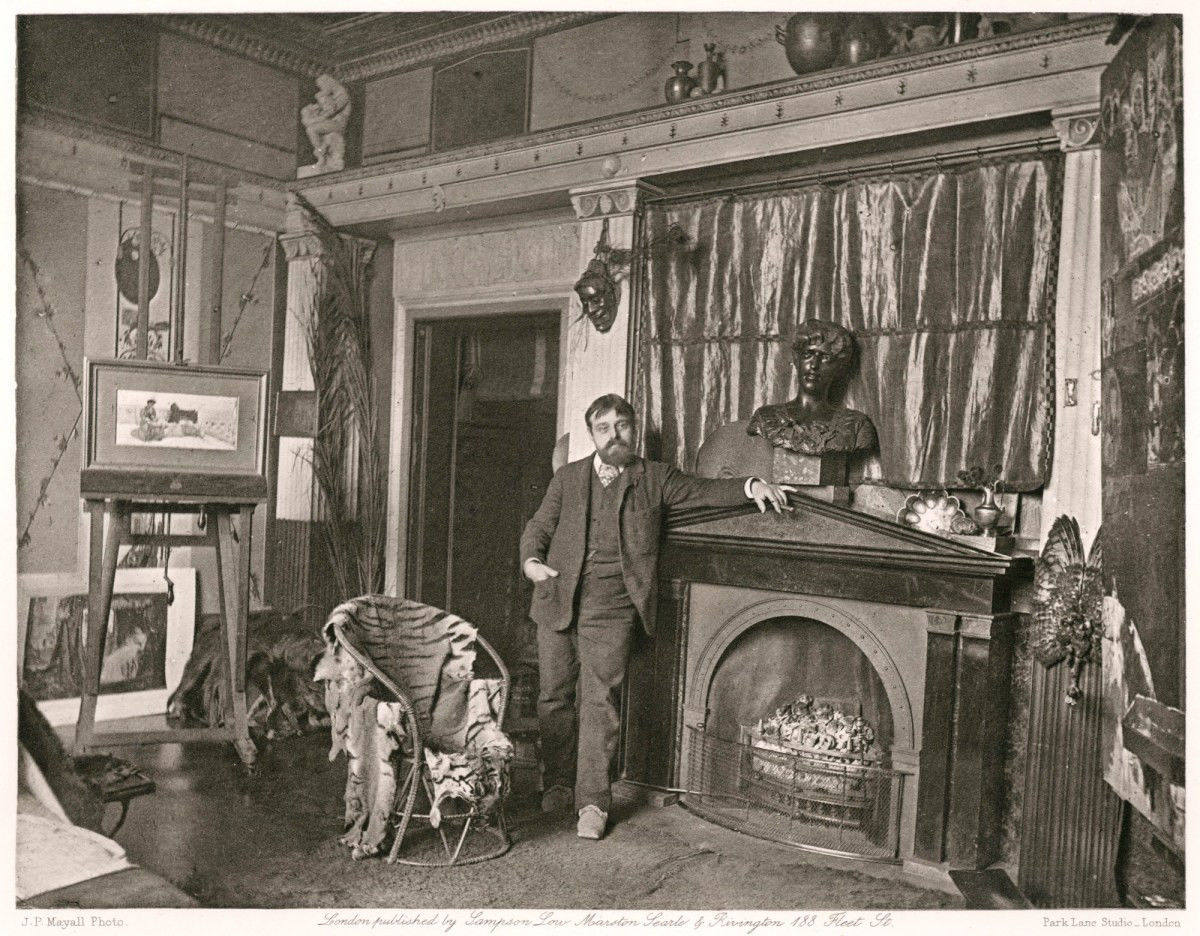
Are you interested in buying this artwork?
Artwork details
Related artworks
- 1 - 4 / 12
Victor Vasarely
"Venus", multiple 1987 - professionally framed, museumglass1987
€ 3.700Van Kerkhoff Art
 Curated by
Curated byDanny Bree
1 - 4 / 24- 1 - 4 / 12

